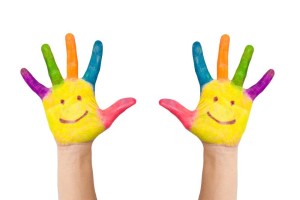 We were recently asked by the CEO of an international corporation with over 100 brands, “What is fun?” At first we were taken back by the question because it seems so self-evident. But as we began to think about how to phrase our answer, we realized he intended to use it to direct his marketing staff to make his own brands more fun.
We were recently asked by the CEO of an international corporation with over 100 brands, “What is fun?” At first we were taken back by the question because it seems so self-evident. But as we began to think about how to phrase our answer, we realized he intended to use it to direct his marketing staff to make his own brands more fun.
He wanted to know the actual components of fun as they applied to the brand image in the product labeling and packaging. Although everybody has different ideas about what is fun, we tried to come up with a description to which most people would agree.
The dictionaries use terms like being amused or entertained, but these are the effects of causes that amuse or entertain us. So what are the causes? As the founders of one of the first wine brands with a “fun” label, he was looking for our marketing insights on the reproducible elements of fun. Here’s our short list on fun as it applies to branding:
1. Logo. When the customer identifies with the logo on their own, without explanation, that is fun. When recollection and cognitive abilities solve the meaning of the image, it is more fun. At Barefoot Cellars, we chose a name and an image that were the same and with which everybody could identify. Folks enjoy being barefoot and associate it with being carefree. Also, it related to our product as it was the way that grapes were originally crushed to make wine. Images that evoke fun experiences entertain.
2. Color. We all remember playing with brightly colored blocks in our childhood. Color catches our eyes and adds a playful dimension. Color is also largely absent from our grey, concrete and steel societies. So its presence on a package is a refreshing reminder of the colors of a more the natural environment we all long for. We chose a different color for each varietal of wine and color coordinated the cartons to match, making for a “fun” display.
3. Play. A playful and self-deprecating approach to design says, “We don’t take ourselves too seriously.” This approach appeals to the customer’s need for a pause from a market full of serious features and benefits, pricing and pitches. It sets a more relaxed and friendly tone by offering the customer some entertainment to grab their attention while the message is subtly and playfully delivered. We used humor in all our marketing materials and, yes, occasionally over did it when it came to foot puns. But people enjoy a deliberate attempt to be entertaining and will forgive you for being somewhat silly. Actually, silly is fun too.
4. Catchy Phrases. If it rhymes, evokes a fun image or has a double intent, your catch phrase or slogan is more likely to be remembered, repeated, and recognized. Short, witty phrases attract customers looking for a lift, and in the process, they get your message when they identify with the humor. We choose “Get Barefoot and have a great time” because of the fun image of being shoeless, walking on the beach, or just plain kicking back at home. But we also used the double meaning of the word “get” to send the message to buy our product. This made it fun for the customer because they already had the memory of an enjoyable time being barefoot, and the catch phrase helped them relive it.
Of course there’s much more to branding with fun. Games, interactivity, solving problems, winning prizes, adventures and mysteries are all fun. But again this is just our short list. Have fun everybody!

